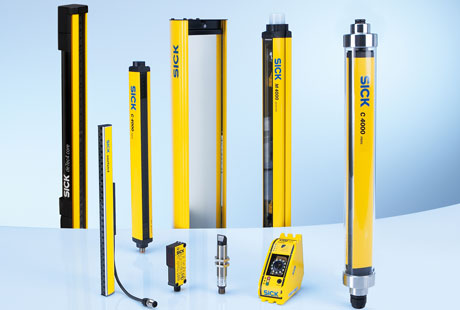How Do You Set Up Sick Light Curtains?
Key Takeaway
To set up SICK light curtains, begin by ensuring the area where the curtain will be installed is clear and accessible. Mount the transmitter and receiver units directly opposite each other on either side of the area to be monitored. Ensure they are perfectly aligned, as misalignment can cause the system to function improperly.
Connect each unit to the power supply and your control system according to the manufacturer’s instructions, typically involving specific wiring configurations. Finally, perform a test to verify that the light curtain activates correctly when the infrared beam is interrupted. This setup process is crucial for ensuring that the light curtain effectively enhances safety by detecting any obstructions in the designated area.
Key Features of SICK Light Curtains
SICK light curtains are designed with cutting-edge technology, providing robust solutions for workplace safety. These systems utilize high-resolution sensors to detect any interruptions in their light grid, which could signify an intrusion or a worker accidentally entering a hazardous zone. The key features that set SICK light curtains apart include their ability to operate in diverse environmental conditions—from high-dust settings to areas with fluctuating temperatures—and their compatibility with various control interfaces, offering ease of integration into existing safety protocols.

Site Preparation for Installation
Effective installation of SICK light curtains begins with meticulous site preparation. Ensuring the area is free from vibrations, electrical interference, and potential obstructions is crucial. The alignment of the transmitter and receiver must be perfectly parallel to ensure the accuracy of the safety barrier. Additionally, assessing environmental factors like ambient light and background reflections is vital to prevent false trips or sensor blind spots, which could compromise safety measures.
Detailed Wiring and Electrical Setup
Installing SICK light curtains requires a detailed understanding of electrical systems to ensure safe and functional wiring. It’s important to follow the manufacturer’s guidelines for electrical connections, including voltage requirements and grounding procedures. Proper insulation of wires and secure connections are essential to prevent shorts and ensure uninterrupted operation. Regular checks for wear and tear on cables and connections are also crucial to maintain system integrity over time.
Advanced Configuration and Customization
Configuring SICK light curtains involves adjusting settings such as beam spacing, response time, and detection modes to tailor the system to specific application needs. This customization capability allows for enhanced flexibility in various industrial applications, from assembly lines to robotic cells, where different levels of protection might be necessary. Moreover, modern SICK light curtains offer user-friendly interfaces for configuration, making it easier for engineers to modify settings on-site without extensive downtime.
Maintaining and Updating SICK Light Curtains
Maintenance of SICK light curtains is vital for ensuring they continue to operate correctly and safely. Regular cleaning of lenses and sensors, checking alignment, and verifying the operation of all system components are necessary to avoid failures. Updates to firmware and software are also critical, as they can provide enhancements and fix vulnerabilities that might affect performance. Implementing a routine maintenance schedule can help detect issues before they lead to system failures.
Conclusion
To maximize the benefits of SICK light curtains, following best practices for installation, maintenance, and regular updates is crucial. Ensuring that all aspects of the installation are correct from the start reduces the likelihood of problems and enhances system reliability. Regular maintenance and updates not only prolong the lifespan of the light curtains but also ensure they meet evolving safety standards, keeping your workplace safe and compliant with industry regulations.
